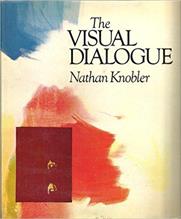

The Visual Dialogue is the effort of an artist and teacher to initiate a manner of thinking about art and of looking at art that will enable the viewer to make his own esthetic discoveries and to have esthetic experiences which are informed and perceptive as well as personal and direct. It introduces those eager to find significance and satisfaction in art to ideas, information, issues, conflicts, and essential values fundamental to any meaningful, constructive discourse with art. The author has used the term "visual dialogue" to characterize the enlightened, respectful exchange that must occur among the artist, his work, and the viewer if there is to be a mature and worthwhile appreciation by society of the art both of our time and of the past. His purpose has been to prepare the educated layman to engage with knowledge and sensibility in a dialogue whose subject is the fulfillment of the human need and potential for esthetic satisfaction. The author proceeds in an exceptionally clean, forthright style to examine the problems of beauty, form and meaning in painting and sculpture, the function of structure in architecture, and the nature of representation and its limits in two- and three-dimensional art. Following an opening sequence of chapters on relatively abstract questions of philosophy and the psychology of human perception, all designed to resolve doubts about the nature and validity of the arts in general, the main portion of the book is devoted to an exposition of the language of the visual arts, to a demonstration of the interdependence between means and ends in painting, sculpture, and architecture. Concluding the book are two chapters concerned with the capacity of the visual arts to bear in their form and content the full weight of powerfully charged expression and with the depth and maturity possible in human experience when complete artistic communication has been realized.